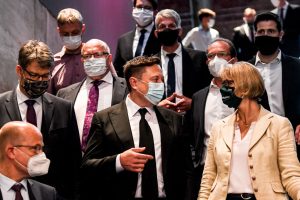There’s no denying that Tesla’s new pricing strategy is aggressive. In recent days, the electric vehicle community has witnessed Tesla practically go for its competitors’ jugular by giving its current vehicle lineup significantly lower starting prices. This was quite evident with the Tesla Model Y, which received notable price reductions across the globe.
While Tesla executives such as Tesla China VP Grace Tao have remarked that the company’s pricing strategies have so far not been driven by the momentum of competitors, it’s difficult to argue against the notion that the EV maker now has some legitimate rivals. This is especially the case in China, where companies like BYD are seemingly putting pressure on vehicles like the Tesla Model 3.
Interestingly enough, Tesla CEO Elon Musk actually provided an early explanation about the company’s new pricing strategy last month. During an appearance at a Twitter Spaces session, Musk explained that he would like to push Tesla’s rapid growth even if it meant that the company’s profits would take a hit. The CEO noted that long term, such a strategy would likely be proven correct.
“‘Do you want to grow unit volume, in which case, you have to adjust prices downward, or do you want to grow at a lower rate or go steady? That’s sort of the choice there. My inclination would be to still grow. My bias would be to say like, ‘Okay, let’s grow fast as we can without putting the company at risk,’ which would mean that in that scenario, profits would be low to negative during a recession. Provided the cash position is okay, I think that’s still the right move long term,” Musk said.
Elon Musk’s comments about Tesla’s cash position are quite notable. Over the years, Tesla has been growing its war chest, and during the third quarter of 2022, the company saw a $2.2 billion increase in its cash and marketable securities. With this amount added, Tesla’s cash and marketable securities reached $21.1 billion at the end of the third quarter. This was driven mainly by Tesla’s free cash flow of $3.3 billion, and offset partly by debt repayments of $900 million.
More importantly, Tesla’s Q3 2022 Update Letter also highlighted that the company has “sufficient liquidity to fund our product roadmap, long-term capacity expansion plans, and other expenses.” This bodes well for Tesla in the coming years, especially considering the company’s increasingly ambitious goals, such as hitting 20 million vehicles per year by the end of the decade.
Elon Musk’s full Twitter Spaces session can be viewed here.





